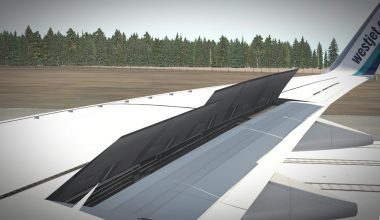How aircraft are protected from lightning strikes?
On a daily basis, lightening slashes through the sky about 8 million times. Flying in such high altitudes above the ground, planes are a natural target for lightning bolts. On average,based on the collected event log, every commercial aircraft gets struck once per year.
Up until some years ago, aircraft were made from aluminum which is a very good conductor of electricity (meaning; it has high electrical tolerance). If lightning strikes this metal, electricity flows along the route of least resistance; the metal skin and exits harmlessly before continuing its natural ride to earth.Passengers hardly knew it at that time, about the airplane’s aluminum exterior which helps to conduct the charge harmlessly from entry point to exit. But, the last crash caused due to lightning happened in 1963, when the fuel tank exploded and resulted 81 deaths. FAA (Federal Aviation Administration), US equivalent of the Civil Aviation Authority, then introduced some design changes to fuel tanks of all aircraft.
But modern planes are made from the extensive composite materials, that don’t conduct electricity well and that makes things more complicated. To compensate that aircraft manufactures have to interweave a thin metallic mesh (usually aluminum and copper mesh) only few thousand of an inch thick, into the skin of the aircraft. This woven metallic mesh acts as a conductive shield, in much the same way as aluminum, allowing electrical energy to flow through it. This system helps to reduce voltages that might be induced inside the aircraft and may harm on-board electrical systems.
Lightning attaches to the aircraft’s extremities such as the nose, wingtips, engine cowlings, and tip of the vertical tail almost instantly. The current travels through the skin before exiting from another extremity. The metal mesh acts like a lightning rod protecting all on-board from the dangerous electrical current making composite plane just as safe as those made from aluminum.
Most importantly, aircraft are shielded from lightning strikes by two things. Brains of the pilot and the weathermen who predict such event. The second is thru a little device known as the Static wick.It is a piece of metal connected electrically to the frame of the aircraft.
To conclude, even though the aircraft are designed and equipped with various safety instruments placed on-board, the pilot and the weathermen are ones making smart decisions about when and where to fly and even if the aircraft is forced to fly through bad weather, the static wicks placed on the wing’s trailing edges should help keep the plane safe.








